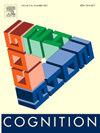成人和儿童决策中的概率错误
IF 2.8
1区 心理学
Q1 PSYCHOLOGY, EXPERIMENTAL
引用次数: 0
摘要
三个研究评估了Tversky和Kahneman(1983)提出的由于代表性启发式而产生的连接谬误(判断两个事件的连接概率高于其组成事件的连接概率)。由于这种启发式思维不是天生的,而是取决于个人对可能发生的情况的学习程度,因此我们的评估采用了一种发展的方法。研究1 (N = 82名成年人;N = 71名4至5岁的儿童)、研究2 (N = 130名成年人;N = 148名4至11岁的儿童)和研究3 (N = 76名成年人)通过要求参与者根据分配的扑克筹码(成人)或积木(儿童)分布来确定单人或双人团队会赢,从而评估客观概率判断。社会判断是基于对个人的描述。三项研究均表明,成人在客观概率判断中的联结谬误受中奖可能性的影响,与判断社会特征的联结谬误正相关。儿童在客观概率判断中的连接谬误不受操纵分配给任何一个小组的概率的影响,并且不作为儿童年龄的函数而不同。客观判断任务和社会判断任务的谬误在10岁和11岁的孩子中呈正相关,但在更小的孩子中没有。研究3显示,“大声思考”程序(促进理性、非启发式决策)减少了成年人在社会判断上的谬误,但对客观概率任务没有作用。研究结果讨论了决策的发展变化,以及与客观和社会判断错误相关的共同与独特的认知过程。本文章由计算机程序翻译,如有差异,请以英文原文为准。
Probability errors in adults' and children's decision-making
Three studies evaluated Tversky and Kahneman's (1983) proposal that the conjunction fallacy (judging the probability of a conjunction of two events to be higher than that of its component events) arises due to the representativeness heuristic. Since such heuristic thinking is not innate and depends upon the individual learning the extent to which situations are likely to occur, our evaluation adopted a developmental approach. Study 1 (N = 82 adults; N = 71 4- to 5-year-olds), Study 2 (N = 130 adults; N = 148 4- to 11-year-olds), and Study 3 (N = 76 adults) assessed objective probability judgements by asking participants to determine whether a single player or a two-player team would win based on assigned poker chip (adults) or building block (children) distributions. Social judgements were based on descriptions of individuals. All three studies showed that adults' conjunction fallacies in objective probability judgements were (a) influenced by the likelihood of winning, and (b) positively correlated with conjunction fallacies in judging social characteristics. Children's conjunction fallacies in objective probability judgements were not influenced by manipulating the probabilities assigned to either team, and did not differ as a function of children's age. Fallacies on the objective and social judgement tasks were positively correlated in 10- and 11-year-olds, but not in younger children. Study 3 showed a “thinking aloud” procedure (to facilitate rational, non-heuristic decision-making) reduced adults' fallacies on the social judgement, but not the objective probability task. Findings are discussed in relation to developmental changes in decision-making, and common versus distinct cognitive processes associated with objective and social judgement errors.
求助全文
通过发布文献求助,成功后即可免费获取论文全文。
去求助
来源期刊

Cognition
PSYCHOLOGY, EXPERIMENTAL-
CiteScore
6.40
自引率
5.90%
发文量
283
期刊介绍:
Cognition is an international journal that publishes theoretical and experimental papers on the study of the mind. It covers a wide variety of subjects concerning all the different aspects of cognition, ranging from biological and experimental studies to formal analysis. Contributions from the fields of psychology, neuroscience, linguistics, computer science, mathematics, ethology and philosophy are welcome in this journal provided that they have some bearing on the functioning of the mind. In addition, the journal serves as a forum for discussion of social and political aspects of cognitive science.
 求助内容:
求助内容: 应助结果提醒方式:
应助结果提醒方式:


